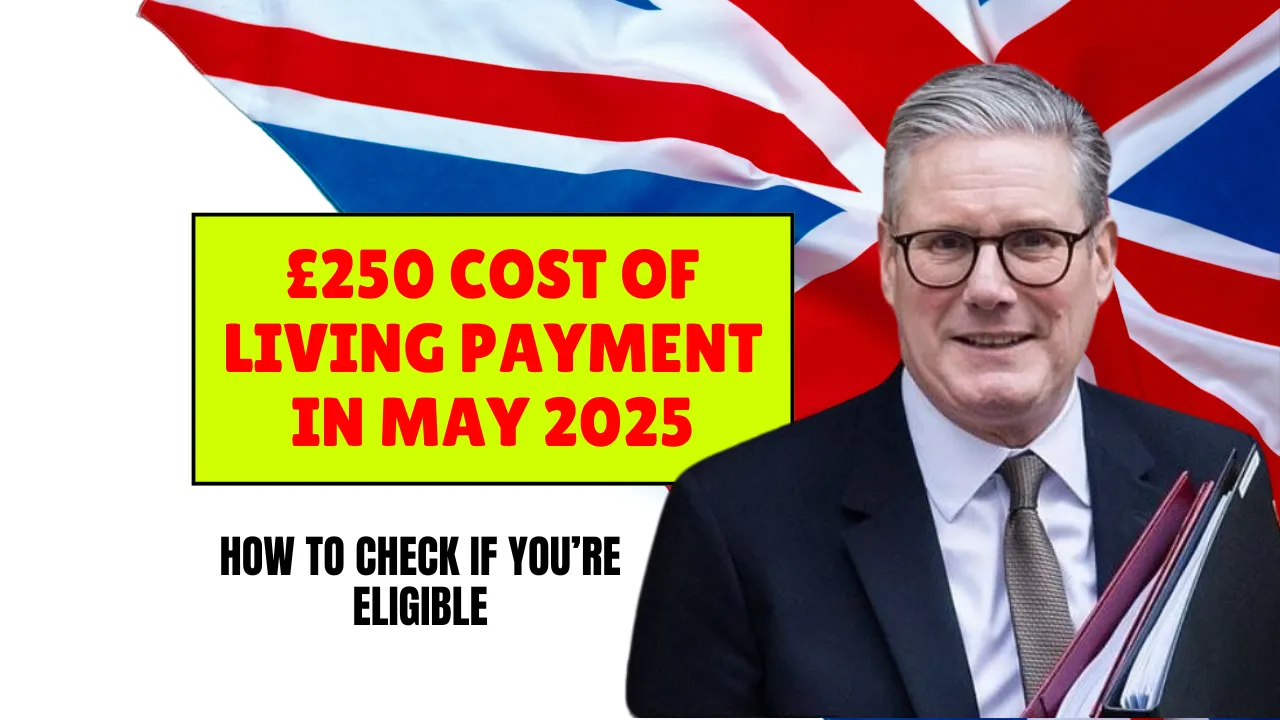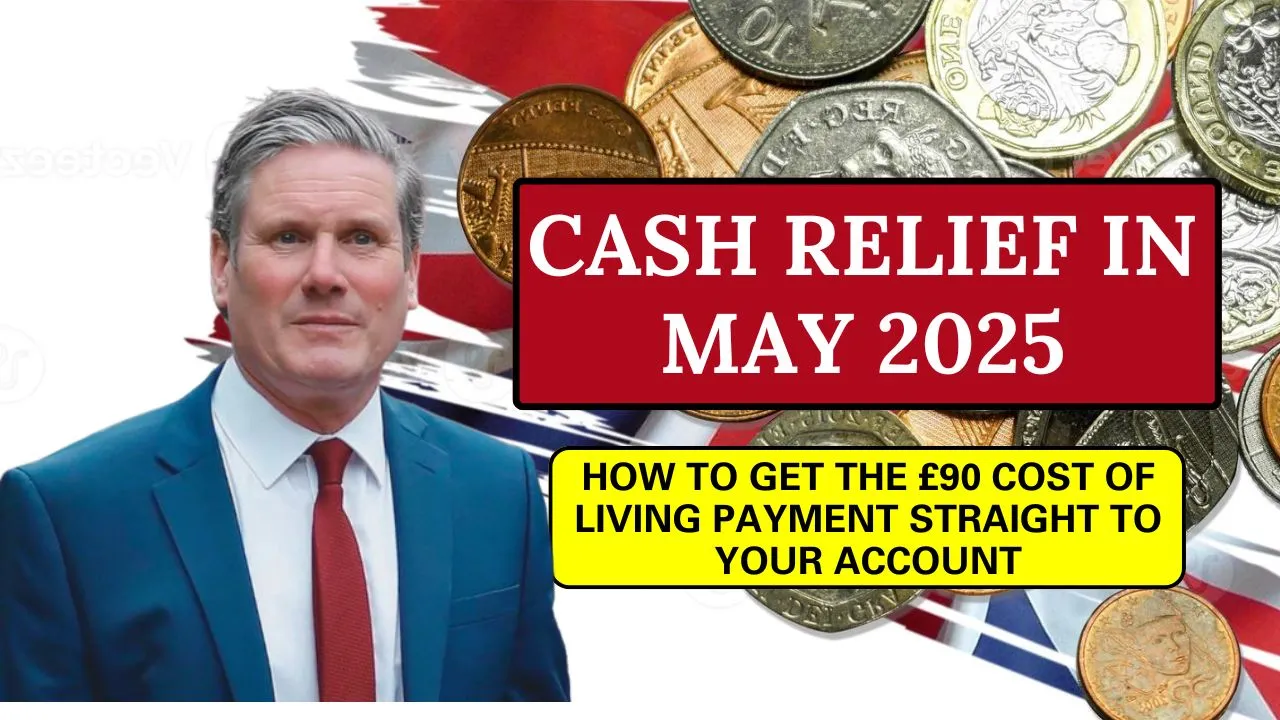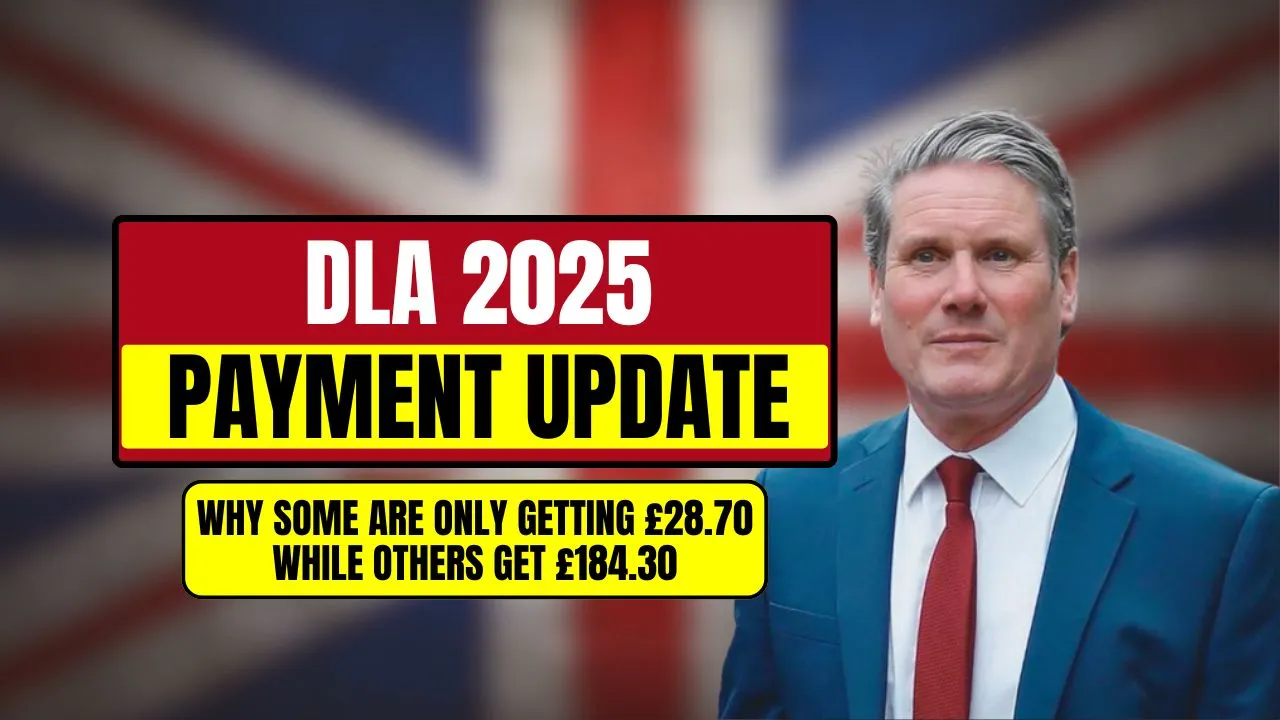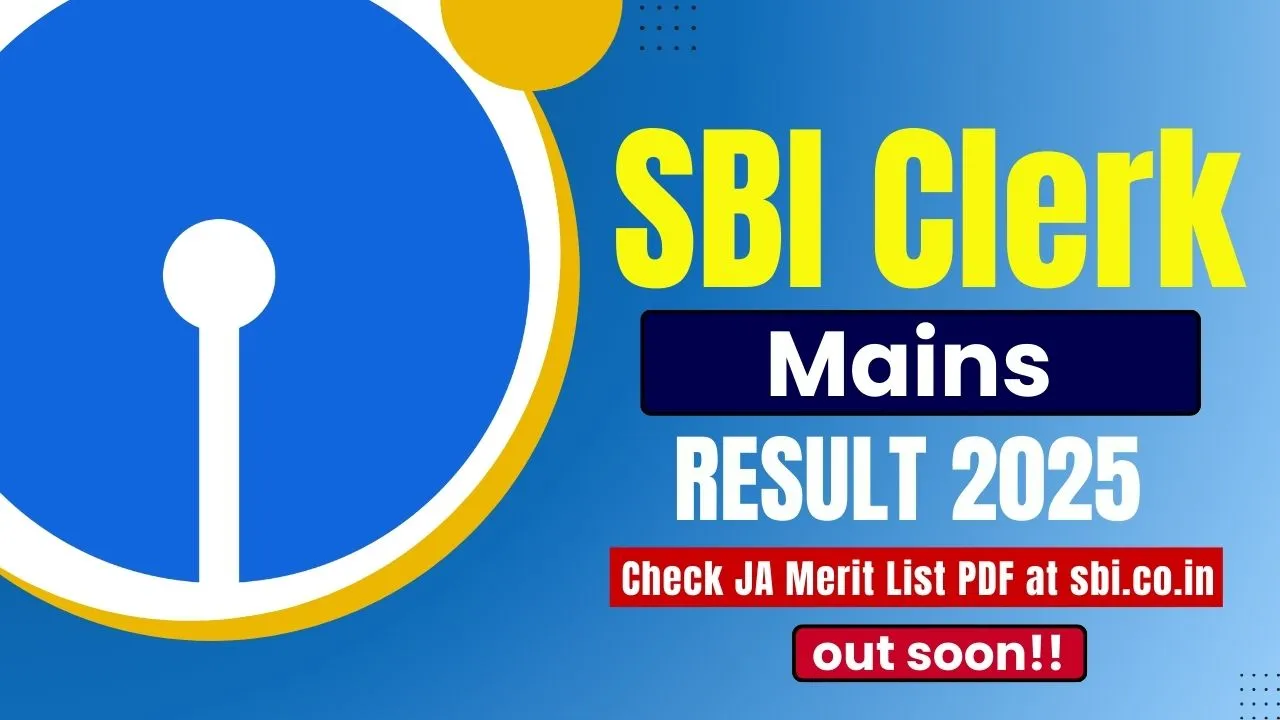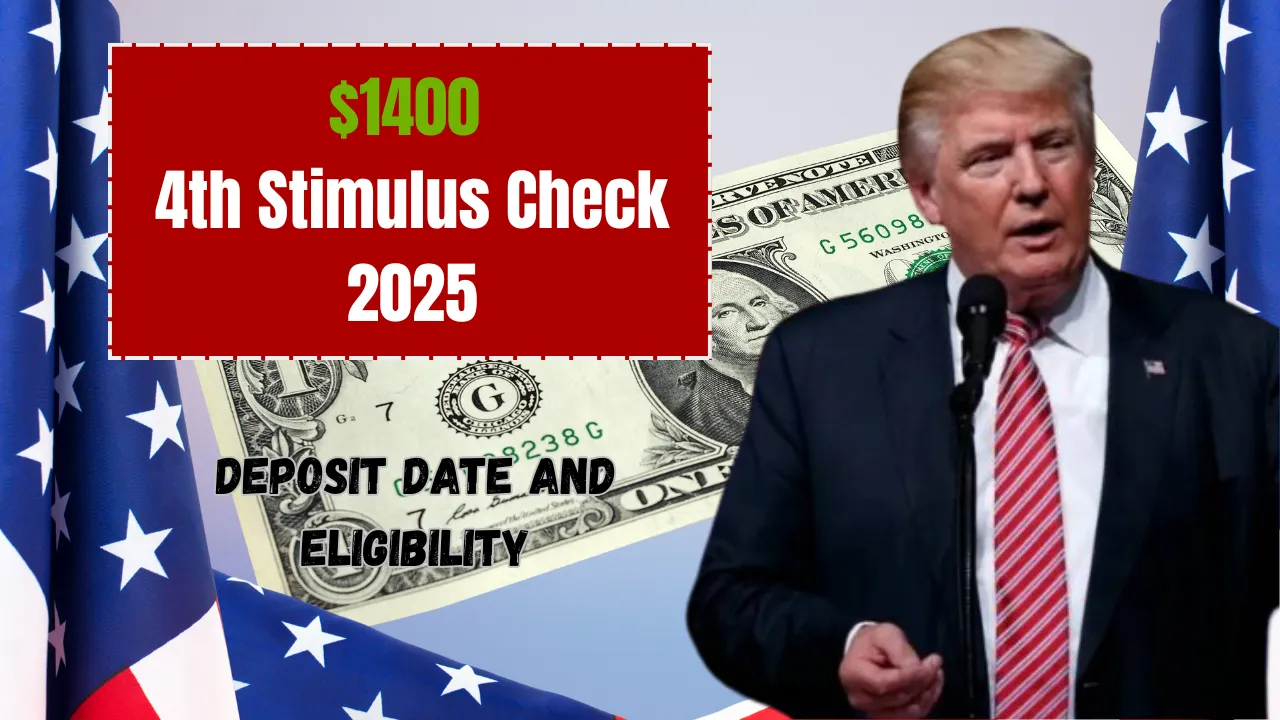£250 Cost of Living Payment in May 2025: The £250 Cost of Living Payment 2025 is one of the UK government’s key responses to the ongoing pressure on household finances. As costs for food, energy, and housing remain high, this one-time payment offers timely relief to those most affected. It is particularly aimed at low-income families, pensioners, disabled individuals, and others who are finding it difficult to meet their basic needs.
This article covers all the important details about the £250 Cost of Living Payment 2025—including who is eligible, how payments are made, and how to apply if you’re not already receiving benefits. Whether you’re looking to understand if you qualify or want to know how to claim, this guide will help you take the right steps.
£250 Cost of Living Payment in May 2025
The £250 Cost of Living Payment 2025 is a one-time support provided in May 2025 as part of the Household Support Fund (HSF), which has been extended through March 2026. This payment is not given to everyone—it targets people most at risk from ongoing financial difficulties. If you receive qualifying benefits or meet local low-income requirements, you may be eligible for this payment. While many people will receive the money automatically, others will need to apply through their local council’s online system.
Overview Table: Key Payment Details
| Eligibility Group | Criteria | How to Receive Payment |
| Benefit Recipients | On Universal Credit, Income Support, Pension Credit, ESA, JSA, Tax Credits | Automatic deposit or cheque |
| Pensioners | Receiving Pension Credit | Automatic payment |
| Disabled Individuals | On PIP, DLA, or Attendance Allowance | May need to provide additional documents |
| Low-Income Households (No Benefits) | Income under threshold and savings under £2,000 | Must apply via local council portal |
Who Qualifies for the May 2025 Cost of Living Payment?
There are four main groups who may qualify for the £250 Cost of Living Payment 2025:
- Benefit Recipients: If you already receive benefits such as Universal Credit, ESA, JSA, Income Support, or Tax Credits, the payment will be processed automatically. No need to apply.
- Pensioners: Anyone receiving Pension Credit is eligible. If you’re of pension age but haven’t yet applied for Pension Credit, applying could open up access to this payment and other benefits.
- People with Disabilities: Individuals receiving Personal Independence Payment (PIP), Disability Living Allowance (DLA), or Attendance Allowance may qualify. Some councils may require proof of your condition or other documents.
- Low-Income Households Not on Benefits: If you’re not receiving any benefits but earn a low income and have savings under £2,000, you may still qualify. Councils will consider your rent, household size, energy bills, and total income.
How Will the £250 Cost of Living Payment Be Distributed?
The payment will be distributed in two main ways, depending on your eligibility:
- Automatic Payment: If you’re receiving qualifying benefits or Pension Credit, you’ll receive the payment automatically by bank deposit or cheque. No forms or application are required.
- Manual Application: If you’re not on benefits but meet low-income criteria, you must apply through your local council’s Household Support Fund portal. The process and requirements may vary slightly depending on your local authority.
Application Process for Non-Benefit Households
For those who need to apply manually, here’s how to proceed:
- Assess Your Finances: Note your monthly income, savings, rent, and utility bills.
- Find Your Local Council: Use the GOV.UK council finder tool.
- Go to the HSF Section: Locate the Household Support Fund page on your council’s site.
- Prepare Documents: Include proof of ID, bank statements, utility bills, rent agreement, and payslips.
- Submit Your Application: Complete the online form and upload your documents.
- Wait for a Response: Councils typically process applications in 2 to 6 weeks.
It’s important to apply as soon as possible. Funds are limited, and councils often review applications on a first-come, first-served basis.
Understanding the Household Support Fund
The Household Support Fund was first introduced to provide emergency assistance during the COVID-19 pandemic. Since then, it has been extended several times due to ongoing economic challenges. The fund is managed locally by councils and can be used for food, energy bills, rent, clothing, and other essential costs.
Each council has the flexibility to create its own rules and guidelines. This helps them meet the needs of their community more effectively, but it also means that eligibility and documentation requirements can vary from one area to another.
Additional Support Available in 2025
Besides the £250 Cost of Living Payment 2025, there are other government programs that may help:
- Winter Fuel Payment: Between £250 and £600 for pensioners during the winter months.
- Cold Weather Payment: £25 per week during extremely cold weather for qualifying households.
- Warm Home Discount: £140 off electricity bills for eligible low-income households.
- Council Tax Reduction: Discounted council tax bills based on your income and circumstances.
These programs can provide extra support throughout the year. You can apply for multiple programs if you qualify.
Why This Payment Matters in Today’s Economy
Although inflation has eased slightly since its peak, the cost of basic necessities remains high. The £250 Cost of Living Payment 2025 provides important relief to people who may still be struggling. Whether you’re dealing with high rent, energy bills, or food prices, this payment is a way to bridge the gap and maintain essential living standards.
It also offers quick access to funds, especially for those who receive automatic payments, and gives councils the flexibility to help where it’s needed most.
Avoiding Scams Related to Cost-of-Living Payments
Scammers often try to take advantage of government support schemes. Here’s how to stay safe:
- Do not share personal details via email or text. Legitimate organizations won’t ask this way.
- Never pay a fee to apply for cost-of-living support.
- Use only official websites, such as your local council’s page or GOV.UK.
- Report suspicious messages or calls to your council immediately.
Being cautious helps ensure your payment reaches you safely.
Taking Action: Next Steps
If you believe you’re eligible for the £250 Cost of Living Payment 2025, here’s what to do:
- Check your bank account if you’re on benefits—you may receive the payment automatically in May.
- Apply through your council if you’re a low-income earner not receiving benefits.
- Collect all your documents in advance to avoid application delays.
- Monitor your application status and follow up with your council if needed.
This payment won’t solve all financial issues, but it can provide essential help at a critical time.
FAQs
Who gets the UK £250 Cost of Living Payment automatically?
Anyone receiving benefits such as Universal Credit, Pension Credit, or ESA will receive the payment without applying.
Can I apply if I’m not on benefits?
Yes. Low-income households not on benefits can apply through their local council’s website.
How long does it take to process applications?
Most councils take between 2 to 6 weeks, but it can vary.
Will I need to apply again in future rounds?
Yes, some councils require reapplication for each round of support.
Does the £250 affect my other benefits?
No. It does not impact your existing benefit entitlements.
Final Thought
The £250 Cost of Living Payment 2025 offers vital relief for those facing continued financial strain. Whether you’re on benefits or managing a tight household budget without assistance, this payment can ease the pressure. Don’t wait—check your eligibility, apply if needed, and help spread the word to others who may qualify.
For more guides and financial tips, browse our latest content—or take a moment to check your daily horoscope for some uplifting advice!
